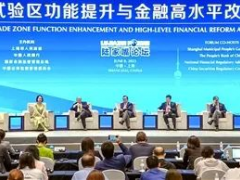In 2022, although South Korea is dragged down by the sharp increase in imports of crude oil, natural gas, and coal, and its trade balance turns into a deficit, it will benefit from the direct and indirect impact of the entry into force of the Regional Comprehensive Economic Partnership Agreement (RCEP) , South Korea's overall export scale continued to expand. Especially with the growth of exports to RCEP member countries such as ASEAN and Japan, South Korea's export value broke a historical record last year, becoming the world's sixth largest exporter, and reaching a new level compared with 2021.
RCEP will come into effect on January 1, 2022, and for South Korea on February 1. According to the forecast of the United Nations Conference on Trade and Development at that time, when RCEP takes effect, the total intra-regional trade volume will increase by about 42 billion US dollars. Among the 15 countries joining RCEP, South Korea will be the third-biggest beneficiary, with an increase in intra-regional trade of around $7 billion, after Japan's $20 billion and China's $11 billion. In terms of actual results, South Korea's exports to the ASEAN region alone increased by more than 16 billion U.S. dollars last year.
Driven by positive factors such as the entry into force of RCEP, South Korea's exports achieved exciting results last year. According to statistics from the Korean Ministry of Industry, Trade and Resources, last year, South Korea's total exports reached US$683.9 billion, setting a new record for the highest annual export value. The ranking of global export volume has increased by one place compared with 2021, and once again rose to the sixth place in the world, second only to China, the United States, Germany, the Netherlands and Japan, and its status as a major exporter has been further consolidated.
From a regional point of view, South Korea's total exports to China, ASEAN and Japan among the RCEP member countries reached approximately US$311.4 billion, accounting for almost half of South Korea's total exports. Among them, South Korea’s largest export destination is still China, with an export volume of 155.81 billion U.S. dollars; while the region with the fastest growth in export scale is ASEAN, with an export volume of 124.95 billion U.S. dollars, setting the highest value since statistics were available, and the growth rate also reached 14.8%. Benefiting from the tariff reduction benefits brought about by the entry into force of RCEP, the export value of South Korea's main export products to ASEAN, such as semiconductors, displays, and petroleum products, continued to grow. On the high growth base of exports to ASEAN in 2021, South Korea has updated its highest export value for two consecutive years.
Another important value of RCEP to South Korea is that it opened a breakthrough for South Korea to develop exports to Japan. Although the reduction of tariffs is a slow and long-term process, and there is a certain delay in the effect, South Korea's exports to Japan have grown for the second consecutive year, with exports reaching 30.63 billion US dollars last year.
Japan is the main export market for South Korea's agricultural products, and the entry into force of RCEP has further expanded the living space for South Korea's agricultural products in Japan. According to RCEP, Japan has opened up Korean agricultural and sideline products such as shochu, rice wine, sake, pears, mushrooms, etc. These products can be easily bought in convenience stores and supermarkets on the streets of Japan, and some supermarkets even have special counters for Korean shochu. Korean alcoholic beverages have gradually become hot sellers thanks to the popularity of Korean dramas broadcast in Japan.
In order to maximize the benefits brought by RCEP to domestic enterprises, specialized agencies such as the Korean Ministry of Industry, Trade and Energy, the Customs Service, the Korea Trade and Investment Promotion Corporation, and the Korea International Trade Association jointly issued the "Common Guidelines for the Utilization of RCEP", using examples from various fields It explains in detail the application strategy of the RCEP rules, precautions when verifying the country of origin, and the application strategies of other countries.
In addition, in order to make it easier for Korean companies to enter the newly opened Japanese market, the Ministry of Industry, Trade and Energy and the Korea Trade and Investment Promotion Agency opened the "RCEP Utilization Support Center" in Tokyo, Japan in November last year to provide export companies with certificates of origin, Customs clearance, elimination of non-tariff barriers and other consulting services.







